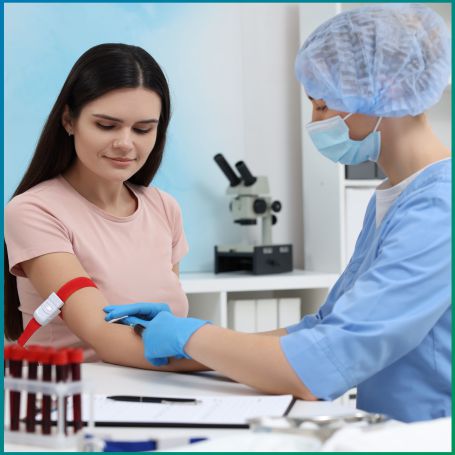
The C/S Nipple Discharge Test involves two key components: cytology and sensitivity testing.

The C/S Nipple Discharge Test, also referred to as the Cytology and Sensitivity Nipple Discharge Test, is a diagnostic procedure used primarily to investigate the causes of abnormal nipple discharge. Nipple discharge is a condition where a woman may notice fluid leaking from the nipple that is not related to breastfeeding. This condition can raise concerns about underlying medical issues, ranging from benign conditions like infections or hormonal imbalances to more serious conditions such as breast cancer.
The test is typically performed in a medical office or clinic. If a woman is experiencing nipple discharge, the first step in the process is usually a clinical examination. The healthcare provider will assess the characteristics of the discharge—whether it is spontaneous or occurs only with pressure, its color (clear, bloody, green, etc.), and whether it comes from one or both nipples.
If the physician suspects a more serious cause for the discharge, they may recommend the C/S Nipple Discharge Test. During the procedure:
1] Collection of Sample: The doctor or nurse will gently press on the affected nipple to collect a sample of the discharge. The sample is typically collected using a sterile swab or a special collection cup.
2] Microscopic Examination (Cytology): The sample is sent to a laboratory where it is examined under a microscope for abnormal or cancerous cells.
3] Sensitivity Testing: If infection is suspected, the sample is cultured to identify bacterial or fungal organisms. Sensitivity testing will determine the best course of treatment if an infection is found.
1] Normal Results: If no abnormal cells or infectious organisms are found, the discharge may be due to benign causes, such as hormonal changes or a harmless cyst. The doctor may recommend monitoring the condition or performing further tests if necessary.
2] Abnormal Cytology: If abnormal cells are identified, additional testing, such as a mammogram, ultrasound, or biopsy, may be recommended to rule out breast cancer or other serious conditions.
3] Infection Identified: If bacteria or other pathogens are found, treatment will typically involve antibiotics or antifungal medications, depending on the specific infection.
Diagnopein stands out as an excellent choice for the C/S Nipple Discharge Test due to its commitment to providing accurate, timely, and reliable diagnostic results. With a team of experienced specialists and cutting-edge laboratory facilities, Diagnopein ensures that every sample undergoes thorough cytological analysis and sensitivity testing. Their state-of-the-art technology allows for precise identification of abnormal cells or infections, aiding in the early detection of potential issues such as infections, benign tumors, or even breast cancer.
Additionally, Diagnopein’s commitment to patient care ensures a seamless experience, with quick turnaround times for results and a patient-friendly approach that emphasizes clear communication and support throughout the diagnostic process. Whether for routine investigation or more complex cases, Diagnopein’s advanced testing protocols and expert interpretation make it a trusted choice for those seeking comprehensive and accurate testing for nipple discharge.
1. Culture Method
2. Sample
3. Colony Count
4. Organism(s) Isolated
5. Culture Report: Culture yields growth of
6. Culture isolated after 7 days :
7. Culture isolated after 14 days:
8. Culture isolated after 21 days:
9. Ampicillin
10. Amikacin
11. Amoxicillin clavulanate
12. cefoperazon+sulbactam
13. Cefuroxime
14. Cefepime
15. Cefotaxime
16. Ciprofloxacin
17. Ertapenem
18. Gentamicin
19. Imipenem
20. Meropenem
21. Norfloxacin
22. Nitrofurantoin
23. Piperacillin-tazobactam
24. Trimethoprim-Sulfamethoxazole (Cotrimoxazole)
Yes, the test is a safe, non-invasive procedure. The sample collection process is straightforward and involves minimal risk.
The test involves gently pressing the nipple to collect a discharge sample. While it may cause mild discomfort, it is generally not painful and is quick to perform.
Results can identify the presence of infections (like bacteria or fungi), abnormal cells, or other signs of conditions such as breast cancer. If infection is found, treatment with antibiotics or antifungals is usually recommended. Abnormal cells may require further diagnostic testing.
The test is recommended if you experience abnormal nipple discharge (such as bloody or spontaneous discharge) that isn’t related to breastfeeding or pregnancy. It helps diagnose conditions like infections, benign tumors, or breast cancer.